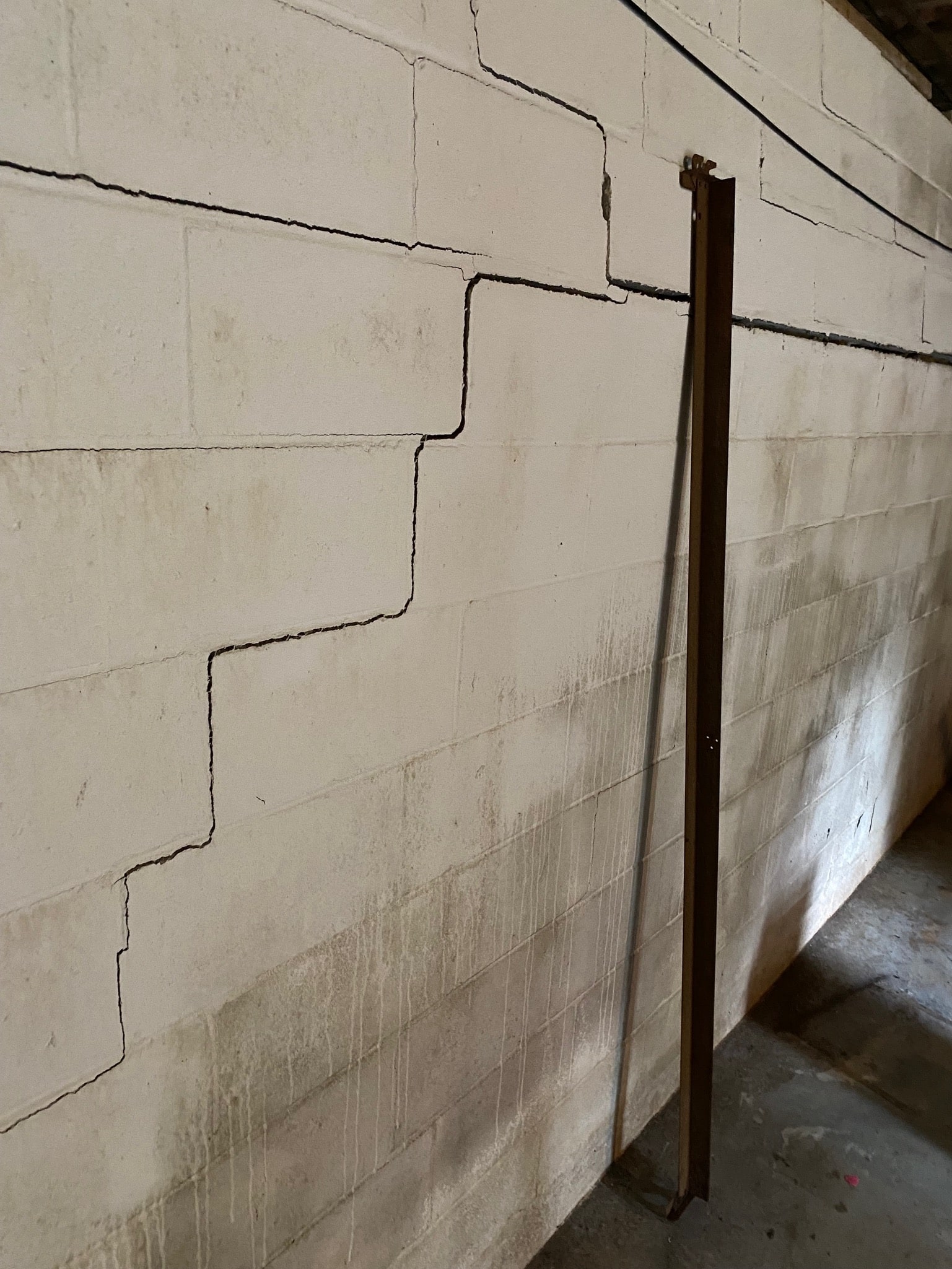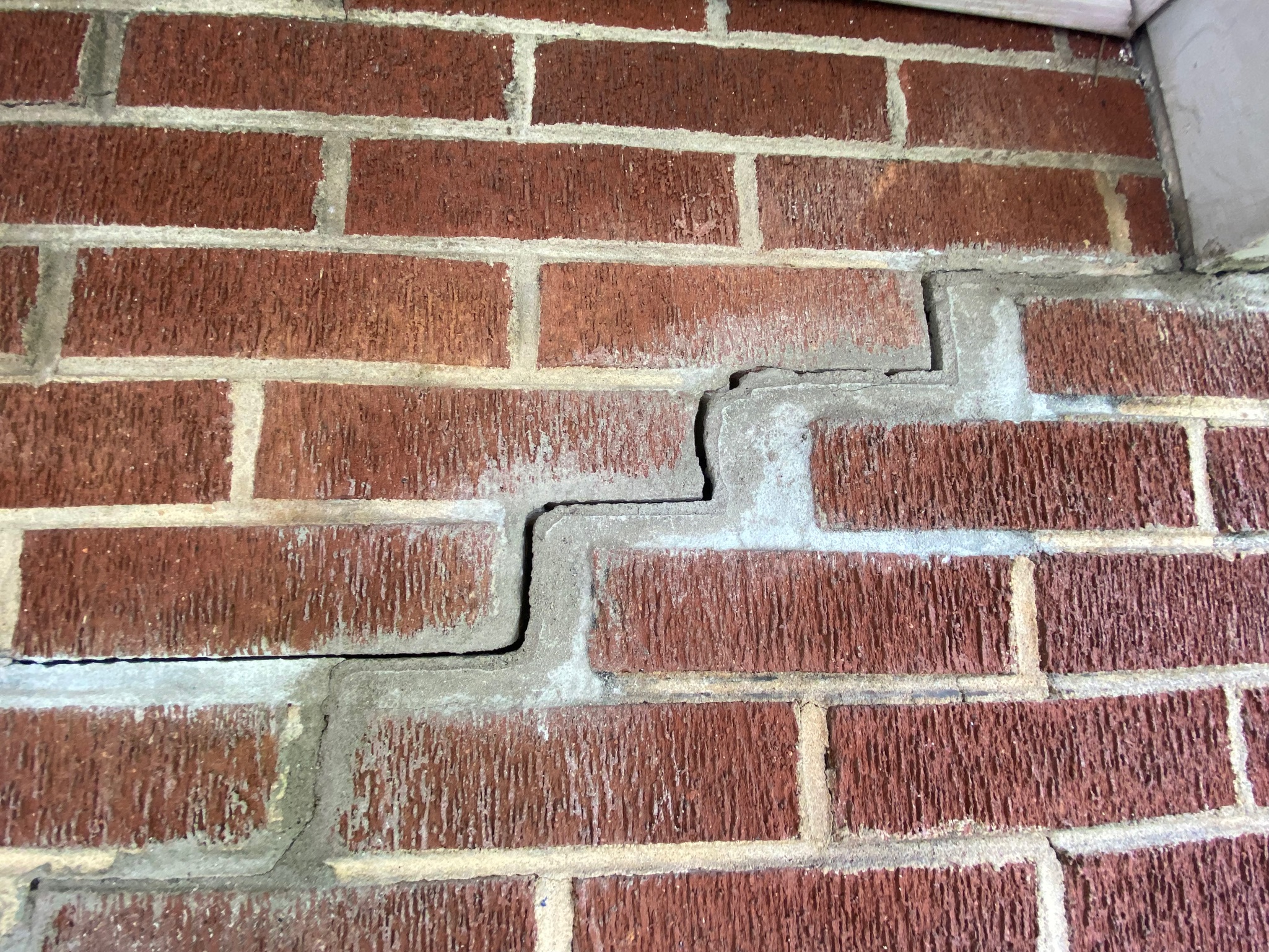You might not realize it, but the changing seasons can greatly impact your home’s foundation. With each season comes a unique set of challenges, from soil shrinkage in the heat of summer to freeze-thaw cycles in the chilly winter. Regular, seasonal foundation inspections are crucial in spotting these issues early, saving you from expensive repairs down the line. But, what exactly should you be looking for in these inspections, and can you do them yourself or should you hire a professional? Let’s explore these questions together.
Key Takeaways
- Seasonal foundation inspections identify early signs of structural issues, ensuring home safety and preventing costly future damages.
- Seasonal changes impact soil moisture and composition, affecting foundation stability and increasing the risk of damage.
- Preventative maintenance strategies tailored to each season can enhance foundation resilience and help mitigate risks before severe conditions arise.
- Although professional inspections can be costly, they provide thorough assessments and help homeowners comply with certification requirements.
- Neglecting foundation inspections can lead to higher repair costs, potential policy cancellations, and a decrease in property marketability and value.
Understanding Foundation Inspections

In the realm of home maintenance, understanding foundation inspections is crucial. They’re not just a routine check-up for your house. Rather, they’re a preventive measure to safeguard against future damages.
There are several foundation types, each requiring a different inspection approach. You’ve got slab foundations, pier and beam foundations, and crawl space foundations. Slab foundations are typically made from a single layer of concrete, while pier and beam foundations consist of concrete piers and wooden beams.
Crawl space foundations, on the other hand, have a gap between the ground and the house.
Now, let’s talk about inspection frequency. You may think, “I’ve got a new house, I can skip an inspection for a few years.” Wrong. Regardless of the age of your house, experts recommend at least one inspection per year.
Why? Because foundation problems can develop rapidly, and they’re not always visible to the untrained eye.
Seasonal Changes Impact Foundations
While annual inspections are a must for any home, it’s important to consider the impact of seasonal changes on your foundation. Weather patterns, including fluctuating temperature, can significantly alter moisture levels and soil composition around your home.
In colder seasons, frost heave is a common issue. As moisture in the soil freezes and expands, your foundation may be pushed upwards, causing damage. Frequent temperature fluctuations exacerbate this problem by repeatedly freezing and thawing the ground, leading to continual foundation movement.
Warmer seasons bring their own set of challenges. Increased temperature and rainfall promote root growth, which can interfere with your foundation. Overly saturated soil can also lead to drainage issues, causing water to pool around your home, adding undue pressure on your foundation.
Landscaping effects, too, can impact your foundation. Seasonal maintenance, such as planting new trees or installing irrigation systems, can disrupt the soil around your home, causing settling issues.
The climate impacts on your foundation aren’t to be overlooked. Seasonal changes dictate the health of your foundation, and therefore, understanding these impacts is crucial in maintaining the structural integrity of your home.
Spring Inspection: What to Check
Despite the allure of blooming flowers and warmer weather, springtime brings about specific challenges for your home’s foundation. As part of your spring checklist, it’s essential to inspect your foundation thoroughly to nip potential issues in the bud.
First, you’ll want to check for water leakage. Increased moisture levels during spring can lead to water seeping into your basement, causing potential damage to your foundation. Carefully inspect the walls and floor for any signs of water intrusion.
Next, keep an eye out for cracks. Small, hairline cracks might appear harmless, but they can expand with moisture and temperature fluctuations, leading to significant foundation issues.
Don’t overlook the importance of inspecting the exterior of your home. Look for any signs of soil erosion around the foundation, which could undermine its stability.
Lastly, if your home has a crawl space, ensure it’s properly ventilated. Poor ventilation can lead to increased humidity, further exacerbating foundation problems.
Summer’s Effect on Your Foundation
As summer temperatures rise, your foundation experiences significant heat impact, which can lead to various issues.
This heat causes soil shrinkage and expansion around your foundation, potentially leading to cracks and instability.
It’s essential you understand how to prevent summer foundation damage to maintain the structural integrity of your home.
Heat Impact on Foundations
An overwhelming majority of homeowners overlook the impact of summer heat on their home’s foundation. However, this oversight can lead to serious structural issues.
Summer’s high temperatures cause heat expansion, affecting both your home and the ground it sits on. This can lead to foundation cracking and compromise the structural integrity of your home.
Moreover, increased temperatures can alter soil composition, leading to moisture retention issues.
- Heat Expansion: As temperatures rise, your foundation and the soil underneath expand. This can lead to cracks and other structural issues.
- Moisture Retention: Summer heat causes the soil to dry out, which can lead to drainage issues. These issues can weaken your foundation over time.
- Temperature Fluctuations: These can cause the soil to expand and contract, which can negatively impact the stability of your foundation.
- Landscaping Impact: The heat can also affect your landscaping, potentially leading to additional foundation problems.
Soil Shrinkage and Expansion
Continuing our exploration of summer’s effects on your home’s foundation, let’s consider how soil shrinkage and expansion come into play.
Soil types play a significant role, with clay soil being particularly problematic due to its high moisture retention. During seasonal cycles, especially in summer, the soil moisture can fluctuate drastically. This variation leads to the soil expanding and contracting, creating a phenomenon known as expansion pressure.
This pressure isn’t a friend to your foundation. As the clay soil expands, it exerts significant force on your home’s foundation, potentially causing instability. Conversely, when the soil dries out and shrinks, it can lead to shrinkage cracks. These aren’t merely cosmetic issues; they’re potential gateways for water intrusion, further exacerbating foundation problems.
Solving this issue isn’t as simple as foundation repairs after the fact. Instead, it necessitates a proactive approach, including appropriate drainage solutions to manage soil moisture.
Preventing Summer Foundation Damage
How can you protect your home’s foundation from the damaging effects of summer? The heat waves and changes in soil moisture can cause significant problems, affecting foundation stability and even the structural integrity of your home. Prevention is key, and there are steps you can take to mitigate these risks.
- Maintain Soil Moisture Levels: Regularly monitor the soil around your home. Dry spells can cause the soil to shrink, destabilizing your foundation. Implement smart irrigation practices to maintain consistent soil moisture, without causing drainage issues.
- Inspect and Repair Expansion Joints: Expansion joints should be checked regularly. Heat can cause foundation materials to expand, and if these joints aren’t functioning correctly, it can compromise the structural integrity.
- Consider Landscaping Effects: Deep root systems can impact your foundation. Choose plants with shallow roots and remember to consider the potential impact of landscaping on drainage.
- Address Drainage Issues Promptly: Drainage problems can lead to excess moisture around your foundation. Maintain gutters and downspouts and consider professional help if problems persist.
Autumn Foundation Checks
As the leaves start to change color and temperatures drop, your home’s foundation requires special attention. Autumn moisture can be detrimental as it can seep into cracks, leading to foundation damage. Similarly, leaf accumulation around your home’s base can trap moisture and create a breeding ground for pests.
It’s critical to perform a detailed check of your foundation during autumn. Look for cracks that may have developed over the summer and have them repaired. Clear away leaf accumulations and ensure proper drainage to prevent water from pooling near your foundation.
Here’s a quick checklist to guide you:
| Task | Why It’s Important |
|---|---|
| Inspect for cracks | Cracks can allow water to penetrate your foundation |
| Repair any identified cracks | This prevents water damage and preserves structural integrity |
| Clear away leaf accumulations | Leaves can trap moisture, leading to water damage and pest infestations |
| Ensure proper drainage | Effective drainage systems prevent water from pooling and seeping into your foundation |
Winter Threats to Home Foundations
While autumn presents its own challenges, winter can bring a whole new set of threats to your home’s foundation. These threats stem from harsh winter conditions that can wreak havoc on your home’s structural integrity.
- Frozen Ground: When the soil around your foundation freezes, it expands. This expansion can push against your foundation, causing a phenomenon known as foundation heaving.
- Snow Accumulation and Ice Damage: Large amounts of snow can lead to moisture infiltration as it melts. Similarly, ice can cause damage as it expands and contracts with temperature fluctuations.
- Thawing Effects and Winter Drainage: The thawing of frozen ground and snow can lead to excessive water around your foundation. Poor winter drainage can exacerbate this, leading to potential moisture infiltration.
- Frost Depth and Freeze Thaw: The depth of the frost and the freeze thaw cycle can affect your foundation. Deep frost can lead to heaving, while freeze thaw can cause cracks to form and widen in your foundation over time.
Understanding these threats can help you identify potential issues early. However, it’s important to also consider preventative measures for each season.
Preventative Measures for Each Season
To protect your home’s foundation, it’s crucial to take proactive measures each season. Seasonal maintenance isn’t just about retaining your home’s aesthetic appeal; it’s about preserving its structural integrity. Weather effects pose significant threats to foundation health; hence, preventive strategies should be your first line of defense.
In spring, the focus should be on moisture control. Rainy weather can lead to soil expansion, putting pressure on the foundation. Regularly check for leaks and ensure proper drainage around your home.
Soil management is particularly important in summer, due to temperature fluctuations causing soil contraction. A well-watered soil can maintain its volume, reducing the risk of foundation cracks.
In fall, inspection frequency should be increased, checking for cracks or damage that summer may have caused. Remember, early detection is key to mitigating major foundation issues.
Winter, with its freezing temperatures, necessitates a focus on insulation and frost protection, keeping your foundation safe from potential freeze-thaw damage.
Each season brings unique challenges, but with careful planning and diligent care, you can maintain seasonal readiness of your foundation, making it resilient to weather changes. This approach isn’t just about safeguarding your home but also about ensuring peace of mind.
Hiring a Professional: Pros and Cons
Despite the usefulness of maintaining your foundation personally, there comes a point when hiring a professional might be the best option.
Yet, this decision isn’t without its pros and cons.
One significant advantage is that professionals are conversant with certification requirements. They’re trained to identify structural issues that you might overlook.
Moreover, they use advanced inspection technologies, ensuring a comprehensive assessment of your foundation’s state.
However, hiring professionals does come with its drawbacks. Notably, the cost can be steep.
Plus, finding a reliable professional can be a time-consuming task.
Here’s a quick breakdown:
- Pros
- Knowledge of certification requirements: Professionals are trained to meet industry standards.
- Use of advanced inspection technologies: They employ sophisticated tools for thorough inspections.
- Cons
- Cost: Professional services can be expensive.
- Time: It takes time to find a trustworthy professional.
DIY Foundation Inspection Tips
Now, let’s turn your attention to some DIY foundation inspection tips.
Knowing the key inspection areas and spotting potential issues are crucial skills you’ll need to master.
You’ll learn how to accurately assess your foundation’s health, from identifying critical areas to spotting signs of potential problems.
Key Inspection Areas
As a homeowner, you’d find it useful to know the key areas to inspect when conducting a DIY foundation inspection. It’s critical to ensure the structural integrity of your home and mitigate potentially high repair costs.
- Soil Moisture: Check the soil around your foundation. Uneven soil moisture can cause the foundation to shift or crack.
Install proper drainage systems to address any drainage issues.
- Crack Patterns: Observe the crack patterns in your foundation. Certain patterns may indicate severe structural issues.
Understanding different foundation types can help you discern common crack patterns.
- Pest Infestations and Humidity Levels: Inspect for pests that could compromise your foundation’s integrity.
High humidity levels can attract pests and cause damage over time.
Regularly monitor humidity levels to prevent infestations.
- Vegetation Impact: Look out for any vegetation growing close to your foundation.
Roots can apply pressure and create cracks.
The Financial Implications of Neglecting Inspections

Without regular foundation inspections, you’re setting yourself up for financial hardship down the road. Neglecting these necessary check-ups can lead to costly repairs and a significant decrease in your property value.
The financial implications of skipping foundation inspections are substantial and can be broken down into four main areas:
- Immediate Repair Costs: Failing to spot issues early often results in more extensive damage. This means higher costs for repairs and potentially even full foundation replacement.
- Decreased Property Value: A compromised foundation can seriously degrade your property value. Prospective buyers are less likely to invest in a property that has known structural issues.
- Additional Living Expenses: If your home becomes unlivable due to foundation damage, you’ll have to find temporary accommodation. This can add up quickly.
- Higher Insurance Premiums: Many insurance companies will raise your premiums if your home has structural issues or a history of them.
Frequently Asked Questions
What Are the Signs of a Serious Foundation Issue?
You might’ve a severe foundation problem if you’re noticing cracked walls or uneven floors in your home.
These are significant indicators that shouldn’t be ignored.
It’s also worth looking out for doors that won’t close correctly or gaps around window frames.
Don’t overlook these signs, as they could lead to bigger, more expensive repairs down the line.
It’s always best to get a professional opinion if you’re unsure.
How Long Does a Typical Foundation Inspection Take?
Typically, the duration of a foundation inspection depends on your home’s size and the severity of issues detected.
However, you can expect it to take anywhere from 1-2 hours.
Don’t rush this process. It’s crucial to allow ample time for a thorough foundation assessment.
Remember, early detection of problems can save you from costly repairs down the line.
Can I Live in My House During a Foundation Repair?
Absolutely, you can live in your house during a foundation repair.
It’ll cause some disruption, sure, but the repair duration typically isn’t overly long. Temporary housing isn’t usually necessary.
It’s important to note, however, that some rooms may be off-limits while work’s being done.
Make sure to discuss this with your contractor before the repair begins so you’re aware of any potential inconveniences and can plan accordingly.
Will My Homeowners Insurance Cover Foundation Repairs?
Yes, your homeowner’s insurance might cover foundation repairs, but it depends on your policy’s specifics.
Typically, insurance covers perils like fire, wind, and theft, not issues from wear and tear or poor construction.
So, if your foundation’s damage is due to an insured event, you’re likely covered.
Always review your policy’s limitations and exclusions, and consider additional coverage if necessary.
It’s crucial to understand your insurance coverage to avoid unexpected expenses.
What Are the Typical Costs Associated With Foundation Repairs?
You’re probably wondering about the typical costs associated with foundation repairs.
Well, it’s not a straightforward answer. Foundation repair costs can vary widely, from a few hundred to tens of thousands of dollars. It all depends on the extent of the damage and repair method.
Don’t fret, though. Many companies offer foundation repair financing options, making these necessary repairs more affordable.
It’s crucial to deal with foundation issues promptly to prevent more costly problems down the line.
Don’t underestimate the importance of seasonal foundation inspections. They keep your home structurally sound, saving you from hefty repair bills. Each season’s unique challenges can impact your foundation differently, so it’s crucial to know what to look for. Hiring a professional or doing it yourself, both have their merits. But remember, neglecting these inspections can seriously dent your pocket. Stay ahead with regular checks, ensuring a safe, solid home for years to come.

Seal-tite Basement Waterproofing Co. is a full service basement environment contractor. We carry an A+ Better Business Bureau rating. We repaired over 40,000 homes and structures in Virginia, West Virginia, Tennessee, and North Carolina. We are fully insured and licensed. We have worked in all types of locations, including residential and commercial locations, government agencies, colleges, hospitals, churches, and condo associations.
Seal-tite® offers a lifetime transferable warranty. We carry a Class A Contractor’s License and we are fully insured. Our satisfied customers range from government agencies to businesses, hospitals, colleges, churches, and thousands of homeowners. Your home is probably the single largest investment you will make in your lifetime. Don’t wait, call Seal-tite® to help make your home dry, safe and livable.

